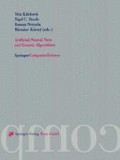Abstract
The brain generally miniaturizes its perceptions into what may be regarded as a model of what happens outside. We experience the world according to the capacity of our nervous system to register the stimuli we receive. In order to understand and control the environment there needs to be proportionality between the measurements represented in the miniaturized model that arise from the firings of our neurons, and the actual measurements in the real world. Thus our response to stimuli must satisfy the fundamental functional equation F(ax) = bF(x). In other words, our interpretation of a stimulus as registered by the firing of our neurons is proportional to what it would be if it were not filtered through the brain. This equation is the homogeneous part of the inhomogeneous equation F(ax) − bF(x) = G(x) with the forcing function G(x). What interests us here is the mode of operation of the (firing) system that needs to always satisfy the homogeneous part.
Access this chapter
Tax calculation will be finalised at checkout
Purchases are for personal use only
Preview
Unable to display preview. Download preview PDF.
References
Aczél, J. D. M. Kuczma: Generalizations of a Folk Theorem, in Vol. 19, Results in Mathematics 5–21. Basel: Birkhäuser Verlag (1991).
Brinley Jr., F.J.: Excitation and Conduction in Nerve Fibers. Chapter 2 in Medical Physiology, V.B. Mountcastle (Ed.). St. Louis: C.V. Mosby Co. 1980.
Hodgkin, A.L. A.F. Huxley: (Ed.). St. Louis: C.V. Mosby Co. dy1980.A Quantitative Description of Membrane Current and its Applications to Conduction and Excitation in Nerves. J. of Physiol. 500–544, 117 (1952).
Poggio, G.F. V.B. Mountcastle: Functional Organization of Thalamus and Cortex. Chapter 9 in Medical Physiology, V.B. Mountcastle (Ed.), St. Louis: C.V. Mosby Co. 1980
Saaty, T.L.: The Brain, Unraveling the Mystery of How it Works, the Neural Network Process, Pittsburgh, Pennsylvania: RWS Publications, 4922 Ellsworth Avenue, Pittsburgh, PA 15213 2000.
Saaty, T.L. L.G. Vargas: A Model of Neural Impulse Firing and Synthesis. J. of Math. Psych. 200–219,2(1993).
Saaty, T.L., L.G Vargas: Representation of Visual Response to Neural Firing. Math. and Comp. Mod. 17–23, 18/7 (1993).
Author information
Authors and Affiliations
Editor information
Editors and Affiliations
Rights and permissions
Copyright information
© 2001 Springer-Verlag Wien
About this paper
Cite this paper
Saaty, T.L. (2001). Ratio Scales are Critical for Modeling Neural Synthesis in the Brain. In: Kůrková, V., Neruda, R., Kárný, M., Steele, N.C. (eds) Artificial Neural Nets and Genetic Algorithms. Springer, Vienna. https://doi.org/10.1007/978-3-7091-6230-9_2
Download citation
DOI: https://doi.org/10.1007/978-3-7091-6230-9_2
Publisher Name: Springer, Vienna
Print ISBN: 978-3-211-83651-4
Online ISBN: 978-3-7091-6230-9
eBook Packages: Springer Book Archive

